7 Reasons Why Solarpunk Is The Most Important Speculative Fiction Movement In The Last 20 Years
7 reasons why solarpunk is the most important speculative fiction movement in the last 20 years
It’s hopeful. Solarpunk doesn’t require an apocalypse. It’s a world in which humans haven’t destroyed ourselves and our environment, where we’ve pulled back just in time to stop the slow destruction of our planet. We’ve learned to use science wisely, for the betterment of ourselves and our planet. We’re no longer overlords. We’re caretakers. We’re gardeners.
Scientists are heroes again. And not just physicists and astronomers. Knowledge of biology and earth sciences matter, they’re the building blocks for a future on Earth. Scientific literacy isn’t just for academics – it’s part of daily life. People know how the things they use work, and if they don’t, they can access that information.
It’s diverse. Solarpunk is rooted in using the environment, so it looks different in different places. Alternative energy is best when specific to place (I imagine geothermal, wind, tidal, and hydroelectric energy sources are still used in certain places) so no overarching government system is needed. Communities can organize themselves, taking their own location and needs and history into account. Brazilian, Inuit, Egyptian, Pacific Northwest, and New Zealand solarpunk can all look very different, but be unified in resourceful, intentional, low impact living.
Individuality still matters. In a post-scarcity society, ingenuity and self-expression are not sacrificed on the altar of survival. With solar power there’s no reason not to go off grid, if that’s what you want to do. Communities can self-organize. You can find a community that suits you, or go live by yourself if that floats your boat.
There’s room for spirituality and science to coexist. Solarpunk is rooted in a deep understanding and reverence for natural processes. There’s room for spirituality there, be it pagan, Buddhist, Sufi, Transcendentalism – anything. There’s so much to explore, from nature worship to organized monotheistic religions, and how they interact with solarpunk.
It’s beautiful. The most common solarpunk aesthetic is art nouveau, but again there’s room for diversity, incorporating art styles from multiple cultures in respectful, non-appropriative ways. The most important aspect of solarpunk aesthetic is the melding of art and utility. The idea of intentional living is strong in art nouveau, but it’s not the only art movement with that philosophy.
We can make it happen. Now. Earthships. Permaculture. Aquaponics. Algae lighting. Compostable products that turn into fields of flowers. Buy Nothing organizations. Tiny, beautiful, efficient homes. Solar power cells you can see through. That’s all happening now. Solarpunk is within our grasp, at least on a personal level. I’m not saying there aren’t still big, ugly infrastructures devoted to unethical consumption, but we can start to tear them down. We can build a solarpunk world with stories and small changes. And small changes lead to big changes. That’s the real beauty of solarpunk. It’s not a post-apocalyptic power fantasy. It’s not a wistful daydream, or an elite future only for physicists. It’s something we can work towards right now. It’s tangible.
More Posts from Green-notebooks and Others
What if, instead of tropical fish tanks, you had a live video stream of a section of coral reef? Every time you “fed” the fish, it would be a button you clicked to donate to the reef’s protection. As more you “feed” the fish, you’re granted more access to other reefs. And nightvision cameras are included so you can see your wild pets at night too without disturbing them with harsh lighting.

Perfect for folks like me who love fish, but do not love cleaning tanks.
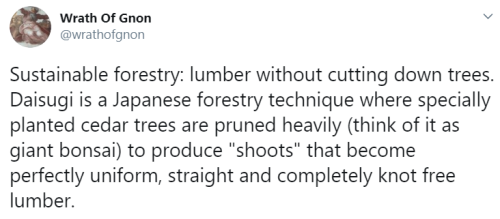
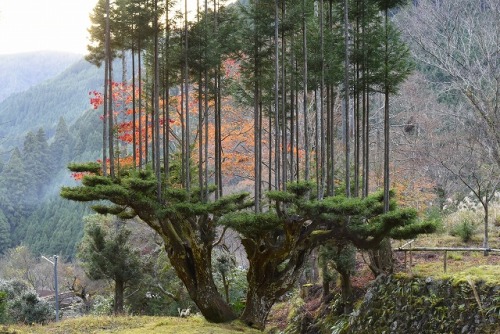
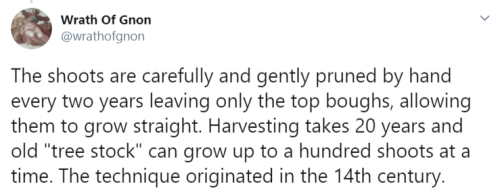

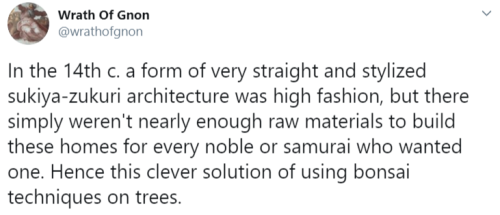
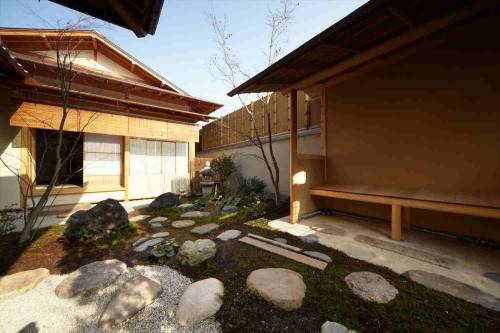






Grow Your Own Avocado and Oak Trees at Home with These Minimalist Glass Vases

if you’re interested in mutual aid and aren’t sure where to start, i can’t recommend enough joining a local Buy Nothing group. in a nutshell, it’s a totally free gift economy— people give from their own abundance and ask for what they need. it’s indispensable as a recent grad household— we got the majority of our basic furniture, as well as an AC unit through the group— but what i find particularly wonderful are the ways other forms of community aid popup through the group.
i’ve seen people organize meal trains for strangers. people fleeing from domestic violence have gone from a suitcase of possessions to a fully stocked house in 48 hours. home hospices being set up with goods from six different households. cookbook lending. distribution of windfall apples and tomato harvest overabundance. grocery pickup for ill folks. people looking out for listings for others. everything from bread to baby carseats to house paint to pet food.
and much of it is done between strangers, often between people who would not recognize or identify with the term “mutual aid”. it lowers waste, goods go directly to people who need them, and it avoids the sometimes dubious morality of the thrift shop circuit. i’d really recommend it.
The Human Race Must Abolish Billionaires
Hello, let’s have a talk. A talky talk. A talky talk about how and why Billionaires should not be allowed to exist, why we can, must, and should seize all of their combined wealth, and what we can do with it when we have it.
And maybe some cheeky ideas about what to do with that sorry lot once we’ve plundered all their shinies and wealth, mhm! Oh yes.
Let’s start here:

Oh my oh my oh my! What is this!
It seems that 2,754 human beings on this planet we share have over $1,000,000,000 in wealth! This simply will not do, that’s far too many. But what I’d really like to do is draw your attention to the eye-gouging sum of their total wealth.
$9,200,000,000,000.
Truly a staggering sum. In fact, it’s so staggering, it’s achieved what really big numbers can do where they no longer really contain any conceivable value. It is truly difficult for the human mind to conceive of this kind of largeness, and it can even trick you into thinking, hey, this isn’t that much bigger than 9.2 million! Which isn’t all that much, really.
I’m so sorry but that’s wrong.
So how much is 9.2 Trillion?
A useful way to look at numbers is to use a scale we encounter every day: the second. I refer to this excerpt from a helpful letter to the New York Times written in 1986:
“I found that 1,000 seconds ago was equal to almost 17 minutes. It would take almost 12 days for a million seconds to elapse and 31.7 years for a billion seconds. Therefore, a trillion seconds would amount to no less than 31,709.8 years.
A trillion seconds ago, there was no written history. The pyramids had not yet been built. It would be 10,000 years before the cave paintings in France were begun, and saber-toothed tigers were still prowling the planet.”
That’s just 1 Trillion seconds. 9.2 Trillion seconds is 291,730.16 years ago! Recorded history doesn’t even go back that far. The lost island in the North Sea Doggerland was still around back then. The land bridge between Russia and Alaska was still around. Starting to get how much money $9.2 Trillion is?
For the sake of argument, let’s say that these 2,754 people are one person (and for the sake of humanity’s scale, they might as well be), and decide to spend their cash. What can they do with $9.2 Trillion dollars?
What about a castle? Castles are cool! I’d like a castle. They gotta be expensive right?
The Devizes Castle, built in the 12th century, was sold for $3.2 million. On our time scale, that’s just about 39 days out of 291,730.16 years. But that’s not even close to the most expensive castle. That’s probably the Asheford Castle, in Ireland, also from the 12th century, valued around $68m. That’s a bit bigger of a chunk, coming around to about 3.2 years out of our budget of 291,730.
Okay, we have a swanky place to live. How about a plane to fly there? Or a boat? Let’s buy the best ones of each.
Luxury jets are easy: you want a Gulfstream IV - clocking in at $38m. There are other, much more expensive planes, but they are more straight up commercial airliners or tactical bombers. For a single person, a Gulfstream is really where it’s at.
Yachts? The choices here are way more varied. Technically, the world’s most expensive yacht is the History Supremee at $4.5 Billion, but this is just a mere 100-foot vessel coated in pure gold and platinum. Let’s go bigger, but slightly cheaper, and get the Eclipse, a 536 foot long, $1.5 Billion dollar vessel that is sure to make all the less rich people envious.
Why not a car? The most expensive car is the Koenigsegg CCXR Trevita, coming in at a mere $4.8 Million.
If we add this all up, it’s $1,042,500,000. This is 33 years.
You can buy the world’s most luxurious castle, jet, yacht, and car, and only use 35 years out of the budget of 291,730.
In FACT: if every single one of the 2,754 billionaires could buy one of the most luxurious castle, jet, yacht, and car each, there would still be $6.3 TRILLION left over between them.
Starting to get the picture?
There is no logical, moral, ethical, or even comedic argument to be made for even 10,000 people to have access to $9.2 Trillion in wealth, much less 2,754. They simply cannot spend this wealth on a meaningful, individual level. It can only be hoarded, and used to create more wealth.
Now, let’s say we forcefully take their money, and liquidate all their assets, and we, the people, now have $9.2Trillion in fungible cash. Let’s say, for the sake of argument, that the $200 billion that we need to drop to make this an even 9 gets lost in depreciation. That’s almost 2%, so, I feel that’s not a difficult or even unfair argument to make.
So, let’s say after seizing these bastard’s wealth and liquidating it we have $9Trillion left over. What can we do with all of that?
It would only cost about $55 Million to fix Flint. Let’s do that.
The most bloated estimates say it would cost $265 Billion to end world hunger and malnutrition. Let’s do that.
What about education? What if we forgave all the American student loans? That’s a hefty $1.4 Trillion, but, we have it to spare.
Reducing Greenhouse Gasses is a tricky one. Planting trees to offset carbon emissions is a good idea, so, let’s fund some projects to do that.
“The cost to plant a tree varies depending on the location of the project and the type of tree being planted, and ranges between approximately one dollar to three dollars per tree.” - Plant a Billion Trees
So, $3Billion for a billion trees. Nice. That’ll regreen the landscape quite a bit, and this is just one example of a single effort to reforest multiple lost jungles. Let’s fund five such projects, bringing the total to 5 billion trees and $15 Billion dollars.
What about Solar? What if we made a Solar Farm in the Sahara to cover the energy use of the entire planet? The cost of the project will be about five trillion dollars assuming we could figure out the infrastructure to support it.
What’s that got us, totaled up? We’ve spent $6.68 Trillion. We’ve got about $2.3 Trillion left over. We’ve ended world hunger, forgiven all American student loan debt, replanted billions of trees, and the world, in theory, is on 100% solar power now. Seems like a pretty rosy state of existence. And we still have 72,932 years of our time/money left over. That’s almost enough left over to buy every billionaire the most luxurious castle, jet, yacht, and car.
FUCK. THAT.
So, clearly, it is an illogical, immoral act for a billionaire to hoard all this wealth, when we’ve seen what we can do with it. What should we do with them?


“One of the biggest reasons our personal lifestyle choices matter when it comes to the climate crisis is that what we do changes us. And the other big reason is that what we do and say changes others, too.” Behavioral contagion is a real psychological phenomenon and it spreads at a much faster rate than you would imagine. In fact, behavioral contagion can be a much more effective way of getting people to change their behavior than rationally explaining to them why a particular change is in their best interest. When people say that personal changes still matter, this is the kind of thing they are talking about. Yes, maybe one person recycling or adopting solar panels or building a pollinator garden in their backyard doesn’t do much in the scheme of the greater problem, but many of these small actions together can build into something that really, really does. Even small, personal changes matter, because taking action to fight climate change changes you and it changes your community.

McGhee attributed the nation’s failure to solve climate change to those who have been in power for the past 40 years and used a culture of racism to foster national divisions along racial, religious, economic, and gender lines.
That fact that a full-blown climate crisis has been allowed to develop, she said, “in full view for over a generation, is as clear a sign as any that we do not have a functioning democracy where the public interest can prevail.”
“Only in a broken democracy,” McGhee declared, “can big fossil fuel companies be allowed to put their next quarter’s profits ahead of the next generation’s existence.”
“Capitalism is writing the rules for democracy,” she stated, “and not the other way around.” According to McGhee, “Climate change is the result of social, economic, and political inequality.”
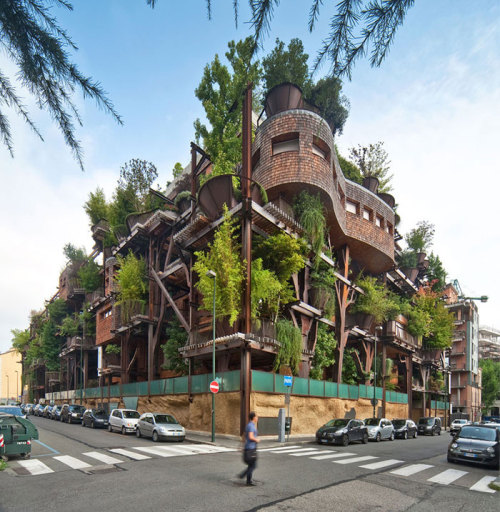
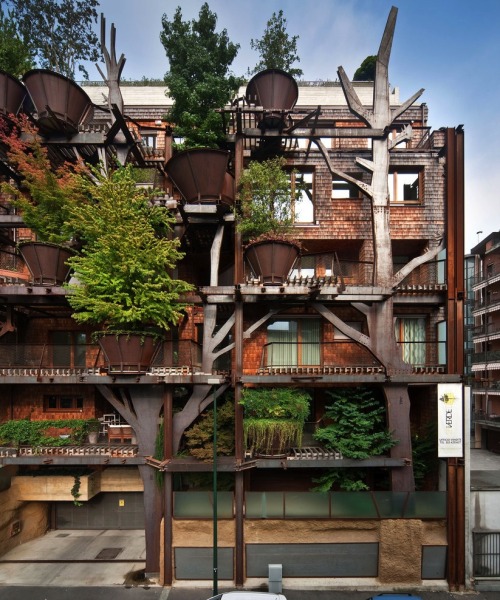
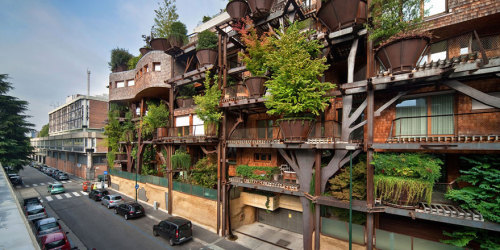
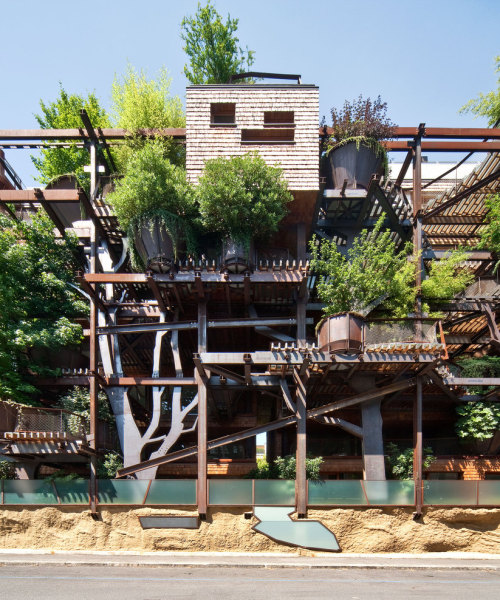
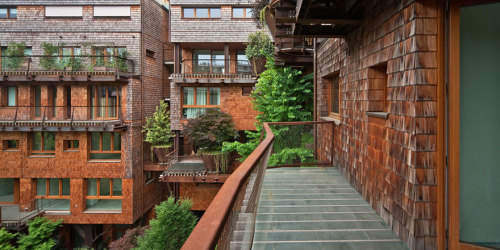
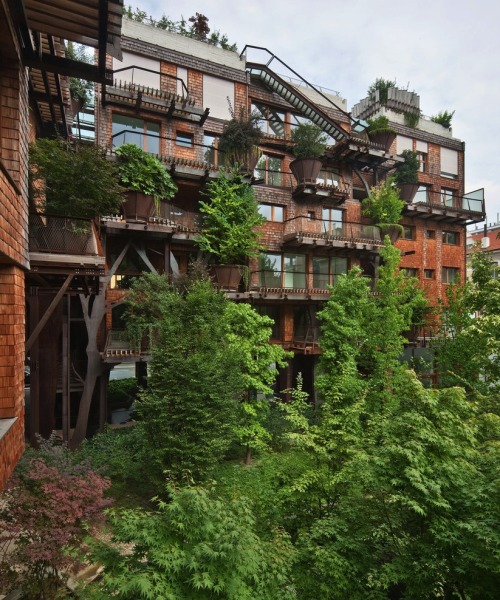
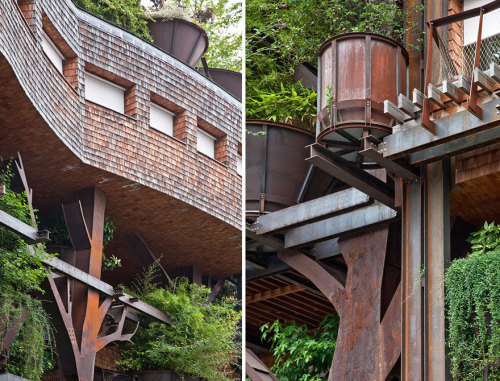
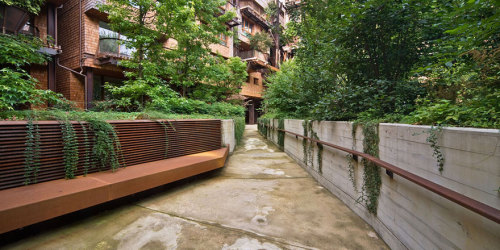
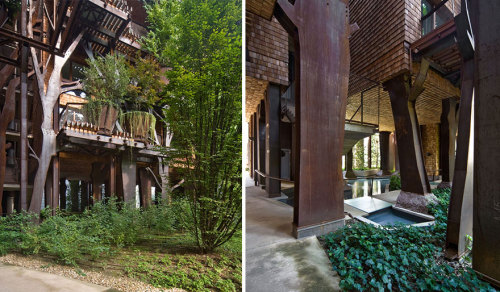
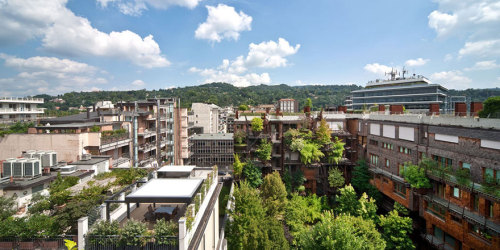
Urban Treehouse Uses 150 Trees To Protect Residents From Noise And Pollution
Luciano Pia, an architect in Italy, has a beautiful vision for how people and nature can live together even in a thoroughly urban landscape. 25 Verde, an apartment complex he designed in Turin, Italy, is a woven 5-story mix of lush trees and steel girders that let urban residents feel like they live in a giant urban tree-house.
Every step in the building’s design was taken with natural integration in mind. The organic and asymmetric shape of its terraces allow potted trees to “sprout” out from the building at random intervals. The ponds in the courtyard provide residents with a refreshing place to relax in the summer, and the 150 deciduous trees, which lose their trees in the winter, allow light to filter in to the building during the darker months. The building helps keep the city’s air cleaner and isolates the residents from the urban sounds and smells surrounding them.The building, which was completed in 2012, is located at Via Chabrera 25 in Turin, Italy – you can even check it out on Google Maps‘ street view!
Via:http://www.boredpanda.com/urban-treehouse-green-architecture-25-verde-luciano-pia-turin-italy/
Learning about edible plants (and eating them) has given me a lot of insight into the problems with the USAmerican food system
It's incredible how a supermarket gives you the sense of being surrounded by immense variety, but it's just the visual noise of advertising. In reality almost everything around you is just corn, wheat, soy, and milk, repackaged and recombined and concealed and re-flavored using additives, over and over and over again.
-
 aloeverawrites liked this · 2 weeks ago
aloeverawrites liked this · 2 weeks ago -
 aloeverawrites reblogged this · 2 weeks ago
aloeverawrites reblogged this · 2 weeks ago -
 dagrxu liked this · 1 month ago
dagrxu liked this · 1 month ago -
 telynores liked this · 1 month ago
telynores liked this · 1 month ago -
 vellichorisatis reblogged this · 1 month ago
vellichorisatis reblogged this · 1 month ago -
 vellichorisatis liked this · 1 month ago
vellichorisatis liked this · 1 month ago -
 mrufki liked this · 1 month ago
mrufki liked this · 1 month ago -
 sigrid-antares reblogged this · 1 month ago
sigrid-antares reblogged this · 1 month ago -
 erreth-m liked this · 1 month ago
erreth-m liked this · 1 month ago -
 relgnira liked this · 2 months ago
relgnira liked this · 2 months ago -
 vesperii liked this · 2 months ago
vesperii liked this · 2 months ago -
 kun16 liked this · 2 months ago
kun16 liked this · 2 months ago -
 itstaisstuff liked this · 2 months ago
itstaisstuff liked this · 2 months ago -
 severalsmallwizards liked this · 2 months ago
severalsmallwizards liked this · 2 months ago -
 mayvora reblogged this · 2 months ago
mayvora reblogged this · 2 months ago -
 artsy-book reblogged this · 2 months ago
artsy-book reblogged this · 2 months ago -
 fantasy-the-final-frontier reblogged this · 2 months ago
fantasy-the-final-frontier reblogged this · 2 months ago -
 mossflwer reblogged this · 2 months ago
mossflwer reblogged this · 2 months ago -
 spiraling-galaxies reblogged this · 2 months ago
spiraling-galaxies reblogged this · 2 months ago -
 tilly-darling reblogged this · 2 months ago
tilly-darling reblogged this · 2 months ago -
 hollowcportcresources reblogged this · 2 months ago
hollowcportcresources reblogged this · 2 months ago -
 possumdetective liked this · 2 months ago
possumdetective liked this · 2 months ago -
 possumdetective reblogged this · 2 months ago
possumdetective reblogged this · 2 months ago -
 sylviadundles liked this · 2 months ago
sylviadundles liked this · 2 months ago -
 wolfspoot-stories reblogged this · 2 months ago
wolfspoot-stories reblogged this · 2 months ago -
 casestudy-mw reblogged this · 2 months ago
casestudy-mw reblogged this · 2 months ago -
 dreamtofswallowingcoins reblogged this · 3 months ago
dreamtofswallowingcoins reblogged this · 3 months ago -
 file-folder reblogged this · 3 months ago
file-folder reblogged this · 3 months ago -
 northgreatern liked this · 3 months ago
northgreatern liked this · 3 months ago -
 infinitely-prolonged liked this · 3 months ago
infinitely-prolonged liked this · 3 months ago -
 strangedaysindeed liked this · 3 months ago
strangedaysindeed liked this · 3 months ago -
 garlic-gal reblogged this · 3 months ago
garlic-gal reblogged this · 3 months ago -
 avalina-music liked this · 3 months ago
avalina-music liked this · 3 months ago -
 helixhexspiral liked this · 3 months ago
helixhexspiral liked this · 3 months ago -
 allie-kathleen liked this · 3 months ago
allie-kathleen liked this · 3 months ago -
 ainulindaelynn liked this · 3 months ago
ainulindaelynn liked this · 3 months ago -
 findusinaweek reblogged this · 3 months ago
findusinaweek reblogged this · 3 months ago -
 findusinaweek liked this · 3 months ago
findusinaweek liked this · 3 months ago -
 highonmountainair liked this · 3 months ago
highonmountainair liked this · 3 months ago -
 garlic-gal liked this · 3 months ago
garlic-gal liked this · 3 months ago -
 cinnamonzen reblogged this · 3 months ago
cinnamonzen reblogged this · 3 months ago -
 slurpingly reblogged this · 3 months ago
slurpingly reblogged this · 3 months ago -
 wormyorchids liked this · 3 months ago
wormyorchids liked this · 3 months ago -
 plantmagicformeandyou reblogged this · 3 months ago
plantmagicformeandyou reblogged this · 3 months ago -
 maeganbobaegan liked this · 3 months ago
maeganbobaegan liked this · 3 months ago -
 northernmoments reblogged this · 3 months ago
northernmoments reblogged this · 3 months ago -
 onegreenthing reblogged this · 3 months ago
onegreenthing reblogged this · 3 months ago -
 goldfishnyx reblogged this · 3 months ago
goldfishnyx reblogged this · 3 months ago -
 goldfishnyx liked this · 3 months ago
goldfishnyx liked this · 3 months ago -
 basically-a-hobbit-ooo-mushrooms liked this · 3 months ago
basically-a-hobbit-ooo-mushrooms liked this · 3 months ago